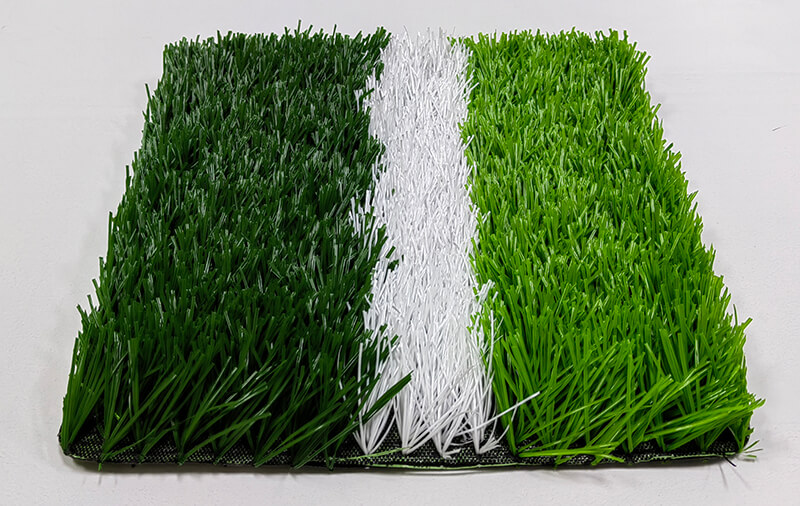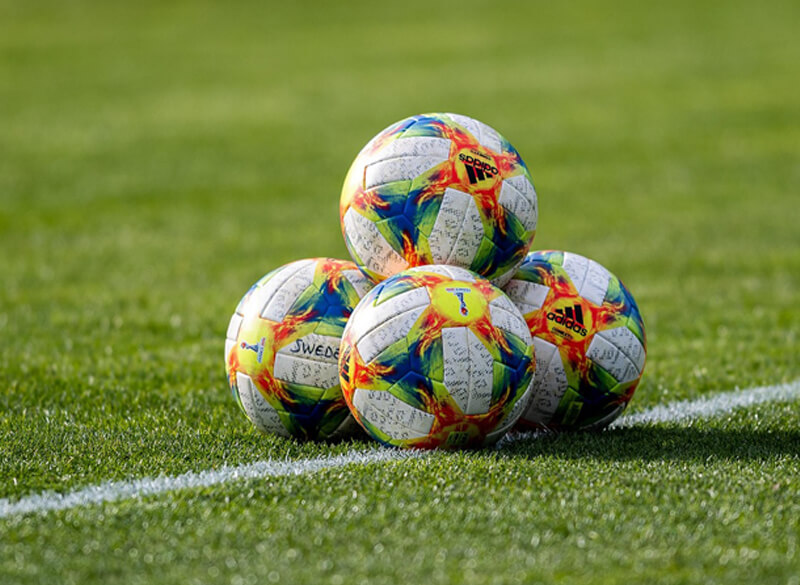
The "Invisible Killer" in the Installation of Infill Football Grass: How Pile Height Affects the Distribution and Stability of Sand-Rubber Infill
When you proudly look at a newly installed football field grass, eagerly anticipating the first match, you might not realize that a seemingly simple parameter—pile height—is silently determining the fate of this pitch. It is not just a number on the price tag of the turf; it is the most cunning "invisible killer" during the installation process. It directly affects the distribution and stability of the infill football grass sand-rubber infill, which is the soul of a high-performance, long-lasting infill football grass system.
Today, we will delve into the installation site to uncover the little-known secrets between pile height and infill, helping you make informed decisions at the early stages of your project and avoid fatal "acquired defects."
![infill football artificial turf for sales]()
Why Is It an "Invisible Killer"?—The Root of the Problem
In the installation of infill football field grass, the ideal state is this: quartz sand and rubber granules are evenly filled to the root of the grass blades, to a depth of about two-thirds of the pile height, forming a flat, stable, and elastic surface.
The "invisible killer," pile height, sabotages this process in the following ways:
1. "Fiber Hiding" Phenomenon: Taller grass blades are denser and softer, making them more prone to tangling and matting during infill installation. This "hides" the infill material, preventing it from settling to the designed depth.
2. Complexity of Vertical Channels: Imagine 40mm grass blades as shorter vertical channels where infill can relatively easily reach the bottom. In contrast, 60mm grass blades form a deeper, more complex "maze," where granules encounter more resistance and interference from the blades during settlement, leading to uneven distribution.
3. Risk of Separation and Compaction: The physical behavior of infill varies drastically across different pile heights of infill football grass systems. Incorrect pile height selection can directly lead to rapid infill compaction or severe separation, completely destroying the football field grass's performance.
All these issues may not be obvious during installation acceptance but will erupt collectively after months of use.
In-Depth Analysis—Filling Challenges and Solutions for Different Pile Heights
Let’s take the three most common pile heights as examples to analyze how this "killer" operates.
1. The Compact Type (40-45mm Infill Football Grass)
Filling Characteristics: Due to the shorter grass blades, the "vertical channels" are simple. Quartz sand and rubber granules can easily and quickly settle to the designated position. The filling process is relatively straightforward, and the target infill rate is easily achieved.
The Killer’s Weakness: The infill layer of such infill football grass systems is relatively thin. Its stability and cushioning rely heavily on a high-quality underlying shock pad. If the pad is inferior, the infill layer itself cannot provide sufficient protection.
Stability Challenges: The infill volume is small and lightweight, posing a higher risk of horizontal displacement and migration under long-term intensive use and rainwater erosion. However, due to the shallow infill layer, subsequent maintenance grooming allows equipment tines to reach the bottom more easily, effectively breaking up compaction.
Installation Key: The focus is on ensuring the quality of the underlying pad. During infill, avoid overfilling to prevent the grass blades from being "submerged," which would compromise ball control performance.
2. The Gold Standard (50-55mm Infill Football Grass)
Filling Characteristics: This is the international mainstream standard for competitive infill football grass systems, striking the best balance between filling difficulty and performance. The pile height is sufficient to provide good ball cushioning and feel without being overly complex.
The Killer’s Disguise: This type requires the most professional installation technique. Installers must strictly adhere to the principle of "multiple fills, multiple brushings." Quartz sand is filled first to stabilize the roots and add weight, followed by layered rubber granule infill. After each fill, a large-powered brush must be used to thoroughly lift and straighten the grass blades, creating clear channels for the next infill.
Stability Challenges: The infill volume is moderate, offering excellent stability. The biggest long-term risk is that if the initial infill is not properly executed, the lower-layer sand and upper-layer rubber granules may gradually separate vertically under use (sand sinks, rubber floats), causing localized performance variations. Regular maintenance grooming is key to sustaining its stability.
Installation Key: "Brush, brush, and brush again!" Professional installers know that for 50mm infill football grass, the power brush is more critical than the infill spreader. Sufficient construction time is a prerequisite for quality.
3. The Deep-Pile Type (60mm+ Infill Football Grass)
Filling Characteristics: Boasts the thickest elastic rubber layer, theoretically offering the ultimate cushioning and safety. However, this is where the "invisible killer" is most rampant.
The Killer’s Fatal Blow:
Distribution Challenges: The long grass blades form an extremely complex maze. Rubber granules are easily "trapped" in the middle and upper parts of the grass, failing to sink effectively to the designed bottom depth. This leads to two consequences: insufficient support at the base, causing the grass to mat easily, and excessive rubber on the surface, hindering ball roll.
The Ultimate Nightmare—Compaction: The deep infill layer has poor ventilation and slow drainage at the bottom. Under the combined effects of rainwater and gravity, the bottom quartz sand easily hardens into a cement-like slab. Once compacted, moisture cannot evaporate, the infill layer loses all elasticity, and the field becomes extremely hard.
Granule Hiding: During play, cleats can "kick" surface rubber granules deep into the grass, where they hide, causing the visible surface rubber to diminish rapidly and performance to degrade.
Stability Challenges: Extremely difficult to maintain the initial stable state. Requires very frequent and deep maintenance, resulting in the highest upkeep costs.
Installation Key: The most meticulous installation process is mandatory. The number of fills and brushings must be increased, and even special equipment may be needed to ensure the infill settles properly. Strongly recommend pairing with a high-performance shock pad to share the cushioning burden and reduce absolute reliance on the infill layer.
![50mm football field grass]()
How to Tame This "Invisible Killer"?—Practical Advice for Owners
You are not powerless against the challenges posed by pile height. Here is core advice for investors:
1. Avoid Blindly Pursuing Extreme Pile Height: According to FIFA research and global feedback, the 50-55mm football field grass system is the sweet spot for performance, durability, and maintainability. Unless there are special recreational cushioning needs, 60mm+ systems should not be lightly chosen.
2. Prioritize the Installer’s Professionalism: Ask installers: "For a 50mm turf, how do you ensure even infill distribution?" Professional answers must include "power brushing," "three-stage filling," and "thorough brushing after each fill." Review their past project installation videos and long-term results.
3. Invest in a High-Quality Shock Pad: A high-quality shock pad acts as the "invisible armor" for infill football grass systems. It greatly enhances field cushioning, protects the infill structure, reduces compaction risk, and can somewhat compensate for the inherent shortcomings of different pile height systems. This budget allocation is absolutely worthwhile.
4. Develop a Detailed Maintenance Plan: Professional maintenance costs must be included in the project budget from the outset. Clarify maintenance frequency (e.g., monthly grooming, annual rubber top-ups) and responsibilities with the supplier. Without maintenance, any infill football grass, regardless of initial installation quality, will deteriorate rapidly within 1-2 years.
Pile height, this "invisible killer" hidden in the specification sheet, silently dictates the fate of the infill football grass infill system. It teaches us that a successful football field grass project is far more than just selecting a quality grass fiber.
It is a systematic project, a perfect combination of pile height, grass material, shock pad, infill, installation technique, and long-term maintenance. Among these, respecting the characteristics of pile height and using the most professional techniques to address its challenges are key to ensuring your investment results in a durable, high-performance green football field grass.
We hope this article helps you see through the disguise of this "invisible killer" and lays a solid foundation for success from the very beginning of your project.





















